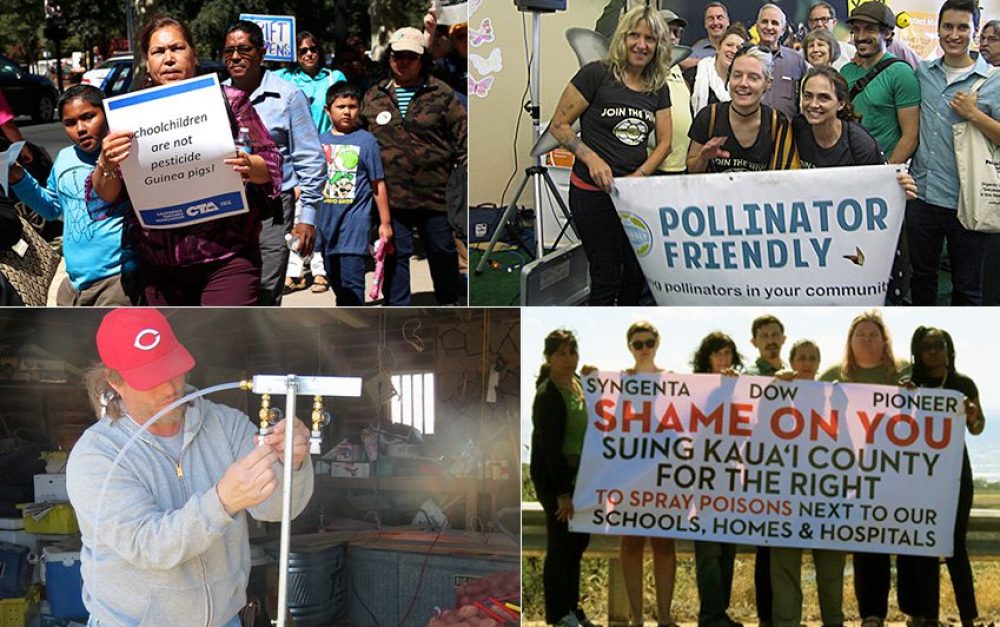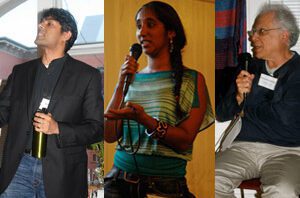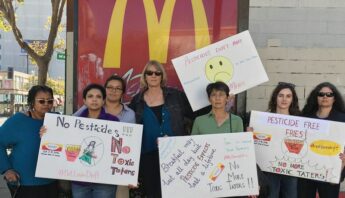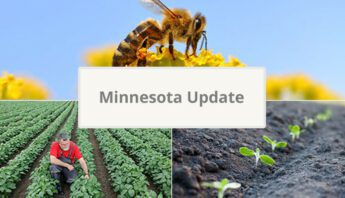As 2016 comes to a close, I’m reflecting on what our PAN community has achieved in the past year — and where we’re headed from here. I honestly don’t know what 2017 will bring, this is a challenging time. But I know one thing for sure: it will take many of us, acting on several fronts at once, to advance toward justice and food system transformation.
With so much at stake, we’re seeing more people than ever standing up to join us — and many among us have practice working against steep odds. In the coming year, we plan to lean into their wisdom and experience as we continue building the movement for healthy, just food under a new administration.
Strides for change
PAN is deeply committed to collaboration and shared leadership, particularly with those most directly impacted by harmful pesticides. We will deepen that commitment in 2017, building on alliances and successes of the past year. Highlights include:
Global call for food justice: This year kicked off with an extraordinary food justice tour of the Hawaiian islands, featuring speakers from Mexico, Nigeria, Malaysia and Switzerland. These powerful activists met with a cross-section of local residents and discussed what my colleague Dr. Marcia Ishii-Eiteman calls “an agricultural economic system that puts multinational corporations’ profits above people’s well-being, and locks farmers into these unsustainable practices.” These discussions will continue sparking action and alliances for years to come.
Spotlight on kids’ health: In the spring, PAN released a sobering report — Kids on the Frontline — detailing the impacts of agricultural pesticides on children’s health in rural areas. We worked with grassroots groups in California, Iowa and Minnesota to set up community and media events, underscoring the science showing that kids living near farming fields often receive a “double dose” of hazardous pesticides in their air and water. With the help of these partners and public health professionals, the report received significant coverage in both traditional and social media.
Equitable Food, from field to fork: More often than not, we move our agenda by linking groups and individual members in shared advocacy campaigns to reduce, regulate and replace pesticides. But the Equitable Food Initiative — with PAN as a founding board member — is an example of a different kind of cooperative effort. Here, farmworkers, growers and retailers work together to certify produce that is “Responsibly Grown, Farmworker Assured.” When Whole Foods followed Costco and joined EFI in 2016, it proved that it’s possible to scale up market-based projects that lead with the heart while they also attend to the bottom line.
The work to come
There are many practical, scientific, economic and environmental reasons to reduce our reliance on chemical-intensive industrial agriculture. There is also an underlying moral imperative to care fairly for the earth and for each other — and to refrain from pushing health and environmental problems onto future generations. The candidates tapped to join the new president’s Cabinet don’t seem to share our perspective. In fact, nominees like prospective EPA Administrator Scott Pruitt — a climate skeptic who made a career of attacking the agency’s regulatory authority — seem to care more about corporate profits than about public health protections. The work to shift farming towards resilient, regenerative, agroecological practices was already challenging enough. So how will we succeed when the powers-that-will-be line up against us?
We will focus on the grassroots, for one, which can be a greater source of power and strength all along the food chain. Although moving national policies that would limit corporate power over the food system will be tough, local and state-based groups like Californians for Pesticide Reform and Toxic Taters are achieving wins close to home. At this level, we can all be part of developing a unified front based not on parties, personalities or dogma, but on common values and ethics. We don’t have a fraction of the financial resources of Big Ag, but we have the passion, power and commitment of people across the country.
Building power
The most inspiring thing for me in 2016 was the incredible Native-led movement to keep the Dakota Access Pipeline from destroying sovereign Sioux territory. By late September, millions of people supported the swelling presence of water protectors at Standing Rock. I know I’ll never forget the bravery and dedication of the people from around the world who spent months at the camps, and how many friends participated from a distance by making calls, writing letters, donating funds, sending supplies and demanding that the mainstream media pay attention to the struggle.
We’ll have to build on that example of strategic activism in 2017. We know that the majority of people in the U.S. care about the quality and safety of their food and water, want fresh and affordable fruits and vegetables, and expect the government to monitor and protect them from hazardous chemicals. It’s critical that more of us stand up and make our voices heard, in every state — red, blue and purple. At PAN, we’re adjusting our plans with an eye toward growing the size of the movement, and strengthening the web of interests and values we share. We need to challenge ourselves a bit, and step out of our comfort zones. This is the moment we’ve been practicing and preparing for now for decades. Join us!








